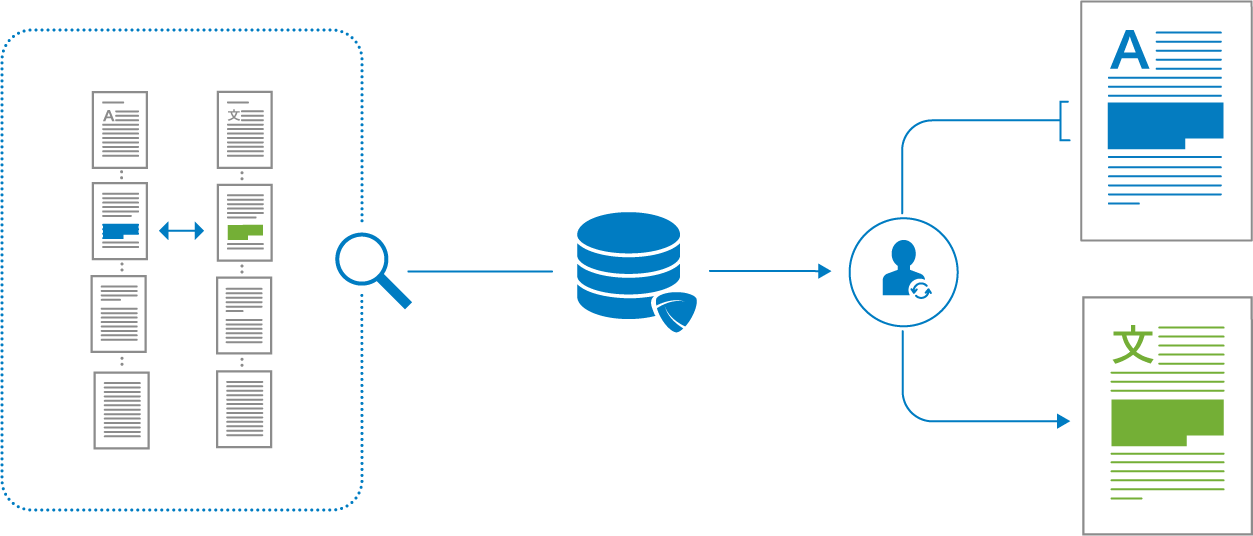Translation Memories
Save time and money. Increase consistency.

What is a translation memory?
A translation memory is a text database that stores all texts that have ever been translated for a particular customer and recognizes any repetitions in these texts. The saved elements may be entire passages, sentences or just individual segments. Translation memories recognize more than just matches or identical repetitions. They can also pick out the similar sections of a sentence that are not quite the same, the so-called fuzzy matches.
A translation memory is built on translation units, which themselves comprise language pairs listing the source and the target language.
How does a translation memory work?
Translation memories store the source texts and the translations as segments. While the translator is working, the TM recognizes repetitions in the text project and automatically suggests stored wordings for the translator to use. Now the translator has a choice: Simply to click and accept the suggestions or to add a different translation that is more suited to this particular context. These changes are also saved.
What are the benefits of a translation memory?
Translation memories speed up the translation process, as entirely identical sections or wordings never have to be translated twice. They also ensure consistency in how your company communicates, as segments that have already been translated will not be rewritten – with the differences this sometimes produces. Translation memories are particularly efficient when dealing with extensive texts and a large number of projects containing significant levels of repetition. They make life easier for the translator. And because we offer discounts on matches as a matter of course, they will of course also help cut costs on your side.
All the same, it is crucial to bear in mind that a translation memory does not produce a machine translation, and that although it can help translators in their work, it can never replace them.
What is the difference between a terminology database and a translation memory?
A terminology database works a bit like a glossary of terms, containing a list of the terms and expressions together with their relevant translations. These databases are created, and then terms are added.
In contrast, a translation memory stores source texts and translations, automatically recognizes repetitions, and displays them during the translation process. It does not need require manual additions. These two resources can be used separately, but certainly work best when combined.
